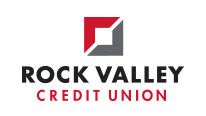Credit Unions vs. Banks: What are the Differences?
Deciding where to put your money and where to go for financial services are big decisions, which is why it’s important to understand your options – like the differences between a credit union and a bank.
When researching financial institutions, consider factors like what the organization offers (products and services), fees and interest rates, and technology offerings. Take your time to do the research so you feel comfortable with your day-to-day personal and/or business needs and long-term options for things like home loans, auto loans, investment services, and much more.
Read on to learn more about some of the main differences between credit unions and banks and how to determine what’s right for you.
How They Operate
One of the big differences between credit unions and banks is how they operate. A credit union is a cooperative, not-for-profit institution, owned and controlled by the people who use the services. These individuals are considered to be members and credit unions provide dividends (profits) to members.
Credit unions are also controlled through a board of directors elected by the membership.
Banks operate as for-profit institutions and are owned by investors. In this case, customers are not involved in how banks are run or operated.
What They Offer
Product offerings from credit unions and banks can be similar, so customer service and responsiveness often factor into picking one over the other.
Both credit unions and banks offer checking accounts, savings accounts, and credit cards. They also offer personal banking and commercial banking services that include loans and loan services, as well as investment services.
Here at Rock Valley Credit Union, we serve more than 15,000 members. In addition to the services listed above, we also prioritize financial education for our members and the public, especially children and young adults, as well as giving back to our local community.
Rates and Fees
Credit unions work to encourage and help members save money, as well as offer loans to their membership. They can charge lower rates for loans – like car loans and mortgages – as well as pay higher dividends on savings because they are nonprofit cooperatives. Rather than pay profits to stockholders, credit unions return earnings to members through dividends or improved services.
Banks tend to have more fees tied to their products and services as another way to make money for investors. These can include minimum account balances or higher fees for things like overdrafts.
Access to Technology
Technology is another area, much like products and services, where credit unions and banks can overlap nowadays. Most offer some form of online banking and mobile apps, for example.
When considering a financial institution, make a list of your must-have technology offerings to help you decide. If there are technology services that the organization doesn’t offer, ask if they’re coming soon or if they’d consider adding them in the future.
As an example, Rock Valley Credit Union’s digital services provide 24/7/365 banking. Our mobile app can even be used to schedule appointments with our team outside of normal branch hours, and new Personal Teller Machines (PTMs) serve members and nonmembers alike with enhanced ATM features and access to a live video teller for more complicated or personal transactions.
Want to learn more? Our Rock Valley Credit Union team is here to help you understand more about the credit union difference and how it might be the best fit for you. For more information, schedule a free consultation by reaching out to our Member Contact Center using our chat feature during regular business hours, complete our online form or call (815) 282-0300.


